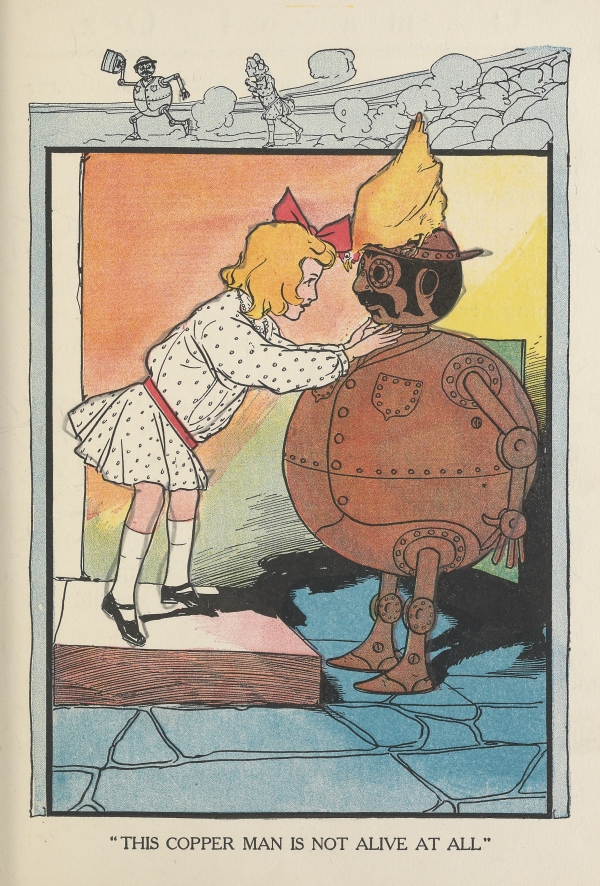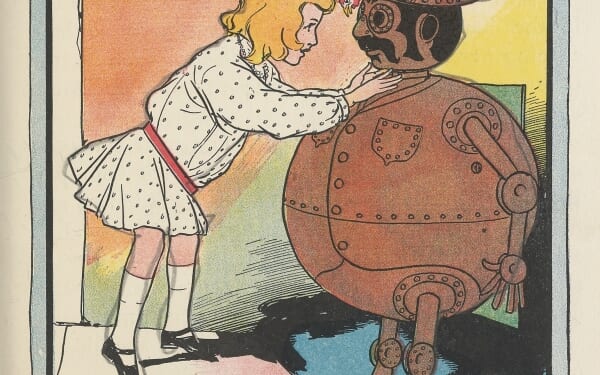In 1984, as a young man of nineteen, I returned from a year of testing my vocation to the religious life. We had been deprived, or rather liberated, from the television for that period. On my short vacation afterwards, I went off to Blockbuster and rented a VHS tape of a popular new movie called “The Terminator.”
It showed a future world where machines were at war with humans, and machines, or as we would call them today, “drones,” killed. It was a science-fiction movie. Forty-one years later, what was fantasy is now reality: drones, even the size of flies, are a principal means of warfare on many battlefields, some sophisticated, some, as in the case of those used by ISIS in the battle of Mosul, rudimentary.
Four years before that movie appeared, the then Prefect of the Congregation for the Doctrine of the Faith, Cardinal Joseph Ratzinger, who would go on to become Pope Benedict XVI, one of the finest theologians in the Church in the last several hundred years, gave a speech at a conference in Palermo, Sicily. (Searching the Internet for articles on this speech, I have only been able to find one, a short piece in Aleteia, written in 2018, by Professor Daniel Esparza.)
Among other things discussed by the Church’s doctrinal watchdog, Ratzinger addressed the seemingly esoteric meaning of the description of the “Beast,” in the Book of Revelation (13:18), in particular the name of the Beast, or rather the number, “666.”
This subject, normally relegated to the outer fringes of religion, or the unpublished dissertations of the mentally unstable, in this barely known address by Cardinal Ratzinger may be one of the most important – and prophetic – speeches in anticipation of the world unfolding at rapid pace in the middle of the twenty-first century.
Rather like “The Terminator,” the world of Artificial Intelligence (AI) in 1980 was pure fantasy, and warnings of the danger of “the machine” seemed to belong alongside ravings from the lunatic asylum.
Drawing from the experience of the Nazi concentration camps, however, Ratzinger said that they “cancelled faces and history, transforming man into a number, reducing him into a cog in an enormous machine.”
He continued, warning of future dangers that portended:
man must be interpreted by a computer, and this is only possible if translated into numbers. The Beast is a number and transforms into numbers. God, however, has a name and calls by name. He is a person and looks for the person.

Many years before, Fr. Romano Guardini, a theologian highly influential on the thought of Joseph Ratzinger, spoke of the dangers unleashed by a post-nuclear age, but which apply as much, if not more, to the age of AI:
At the centre of the endeavours of the coming culture will loom this problem of power. The solution of it will remain crucial. Every decision faced by the future age – those determining the welfare or misery of humanity and those determining the life and death of humanity itself – will be decisions centred around the problem of power. Although it will increase automatically as time moves on, the concern will not be its increase but first the restraint and then the proper use of power.
From the very beginning, in the Garden, when humanity was assured, by the Father of Lies, in whom, as the Lord said, there was no truth, that we could become “like God,” fallen man seems incapable of both caution and restraint.
This is not the twenty-first-century equivalent of the machine-destroying followers of Mr. Ned Ludd, even though that will be the accusation of those determined to forge ahead with the “unavoidable” future of AI. The Beast, the number, not only exists, but is of infinitely superior intelligence to ourselves. He knows all about the unrestrained and improper use of power.
If one quality is needed at this time, perhaps more than any other, it is the gift of discernment.
In the Book of Proverbs, we are told: “Blessed is the man who discovers wisdom, who gains discernment.” Discernment, etymologically, is much more than judging well; it includes the sense of “sifting apart,” rather as the prospector sifts through much dirt before he finds the speck of gold. St. Paul encourages us, in Ephesians, to “try to discern what is pleasing to the Lord.”
Ratzinger’s prophetic and extraordinary insight into the meaning of the number of the Beast, and the destructive possibilities of the machine, echo much earlier words of another prophet, G.K. Chesterton. He said that the “nearer a man is to an ordered and classified being, the nearer he is to an automaton. The nearer he is to an automaton, the nearer he is to a beast.”
We might even add – the nearer he is to the Beast.
For Christians, the advent and speedy development of AI have brought us to a time that will call for much sifting. It might put us odds with many, including some of our own, who will think that we are not only mad, but bad. If there is a coupling of the forces of evil with technology, a prophetic word, like Cardinal Ratzinger’s, will be greatly needed.
Restraint and the proper use of power do not fit with what Solzhenitsyn called the “cave-age emotions of greed, envy, and lack of control.” Those emotions are not restricted to the cave; they are quite at home in Silicon Valley, or on Wall Street.
Discernment is not a given or easily won; it must be worked for and gained. That will take labor and ultimately, perhaps it will only be the Church that provides the necessary means.
A sign of encouragement and hope in these times: both with the choice of his name and with several statements he has already made, Pope Leo has identified AI (rumoured to be the subject of his first Encyclical) as a challenge for the Church, and a danger to “human dignity, justice and labor.”




![Hegseth Demands Fitness Requirements, Says 'Fat Troops' 'Not Who We Are' [WATCH]](https://teamredvictory.com/wp-content/uploads/2025/09/Hegseth-Demands-Fitness-Requirements-Says-Fat-Troops-Not-Who-We-350x250.jpg)






